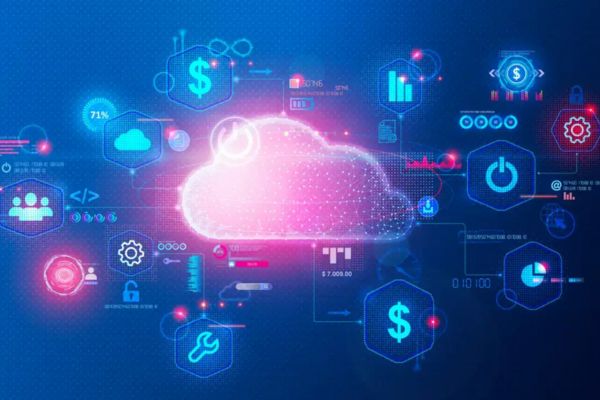Cloud spending continues its upward trajectory, with Gartner projecting global end-user spending on public cloud services to reach $723.4 billion in 2025, up from $595.7 billion in 2024.
(Fun fact: Studies say – there will be 200 zettabytes (a trillion gigabytes) of data in the cloud in 2025).
This surge is largely driven by the increasing adoption of AI and hybrid cloud strategies . Small and medium-sized businesses are also contributing to this growth, with projections indicating that over half of their technology budgets will be allocated to cloud services in 2025 .
However, this rapid expansion brings challenges. The FinOps Foundation’s 2025 State of FinOps Report reveals that workload optimization and waste reduction remain top priorities for over 50% of practitioners . Despite significant investments, many organizations struggle with inefficiencies and lack of real-time visibility into their cloud environments.
Our own research among customers echoes this sentiment. In a study of over 400 global cloud practitioners, spanning 2000+ cloud accounts, 97% of respondents were missing out on at least 23% of cloud savings due to inefficiencies, manual processes, and lack of real-time visibility.
Cloud Waste: The Hidden Drain on Enterprise Budgets
Let’s break it down: cloud waste refers to anything you pay for but don’t fully utilize- idle VMs, unused storage snapshots, overprovisioned compute, and non-production systems running 24/7.
Common culprits include:
- Incorrect sizing of resources
- Outdated instance types
- Development environments running after hours
- Excessive log or data retention
Industry experts estimate that 30 – 40% of cloud resources are typically overprovisioned. That means for every $1 spent, $0.30–$0.40 is wasted. Idle resources alone are projected to account for $14.5 billion in global waste this year.
And it’s not just inefficiency – it’s expensive. These errors are often the result of manual interventions, lack of visibility, and the overwhelming scale of modern cloud environments.
Why Manual Optimization Just Can’t Keep Up
The increasing complexity of cloud operations – fueled by the rapid integration of AI – has made manual optimization unscalable.
In large enterprises with hundreds of accounts and services, relying on cloud teams to manually detect zombie resources, track cost spikes, and reconfigure infrastructure is a losing battle. It results in a reactive rather than proactive approach – one where optimization comes after the invoice shock.
Enter Automation: The Catalyst for Smarter Cloud Usage
Automation has become the backbone of sustainable cloud optimization. From intelligently cleaning up idle and underutilized resources to enabling dynamic provisioning based on real-time demand, it’s reshaping how organizations manage their cloud usage.
Here’s how cloud usage optimization through automation looks in action:
- Zombie Resource Cleanup: Automation engines scan for unattached volumes, idle load balancers, and unused snapshots, flagging them for review or automatically removing them to reduce waste.
- Over-Provisioning Fixes: Instances and volumes with excessive CPU or memory are resized based on usage patterns, helping rightsize infrastructure without compromising performance.
- Modernization: When newer, more efficient instance types become available, the system identifies outdated ones and migrates workloads with minimal disruption.
- Scheduler-Based Shutdowns: Automation helps enforce work-hour-based uptime for dev, test, or staging environments, ensuring off-hours don’t accumulate unnecessary costs or emissions.
- Spot Instance Automation: For container workloads like ECS Fargate, intelligent bots switch between Spot and On-Demand instances dynamically, while maintaining availability.
These are all repeatable, scalable actions that would be nearly impossible to execute manually in a large, multi-account cloud landscape.
Rate Optimization: Let the System Do the Math
It doesn’t stop at usage. Automated platforms also bring intelligence to rate optimization – handling the complexity of RIs, Savings Plans, and Spot pricing. Based on historical usage patterns and predictive analytics, automation engines can suggest or directly purchase the most cost-effective pricing models, while flagging underutilized commitments.
This ensures that you’re not just consuming the right amount of cloud, but also paying the right rate for it.
From Dashboards to Autonomous Action
A lot of enterprises stop at visibility. Dashboards are great, but visibility without action is just observation. Automated optimization transforms that visibility into automated remediation, giving finance leaders clarity while freeing engineers to focus on innovation.
And perhaps most importantly, engineers finally get to spend less time firefighting and more time building.
Final Thoughts: Optimization Is No Longer Optional
The convergence of cloud sprawl, rapid AI adoption, and fluctuating pricing models has made manual cost optimization virtually obsolete. As a result, enterprises are bleeding billions in avoidable cloud spend, often repeating the same costly mistakes month after month.
Recent research shows that organisations leveraging AI-driven resource allocation frameworks are achieving up to 40% cost savings over traditional approaches. Full-featured solutions now offer intelligent resource cleanup, dynamic provisioning, and real-time cost controls—embedded directly into engineers’ existing workflows.
For today’s business leaders, the takeaway is clear: automated cloud usage optimization isn’t just a competitive advantage – it’s becoming table stakes. Chances are, your competition already embraces it.

















